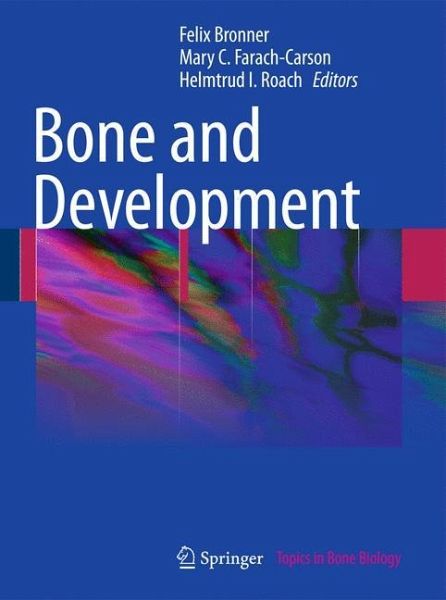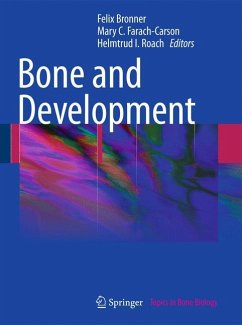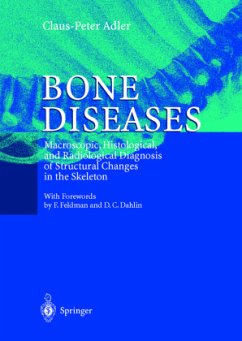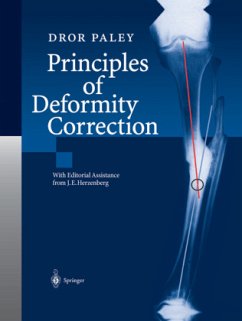
Bone and Development

PAYBACK Punkte
57 °P sammeln!
This is a sixth volume in a series of reviews, centered on a single major topic within the field of osteopathy. The book is an appropriate mechanism for advancing knowledge in the field to researchers, clinicians and others involved in the bone field.
This work intends to look at the role bone development within the field of pediatrics, covering all problematic aspects from basic skeletal growth to tooth mineralization.
To understand tissue development requires combining embryological and histological knowledge with the increasing information becoming available from molecular and genetic studies. Development is characterized by the expression of genes, their subsequent silencing and the expression of other genes. Disease, especially disease progression, is equally characterized by new gene expression that is then transmitted to daughter cells, with the silencing of other genes. In both instances these sequences are the result of the interaction between the genome and the epigenome, i.e. between a very stable set of structures and rapidly changing environmental factors.
This work intends to look at the role bone development within the field of pediatrics, covering all problematic aspects from basic skeletal growth to tooth mineralization.
To understand tissue development requires combining embryological and histological knowledge with the increasing information becoming available from molecular and genetic studies. Development is characterized by the expression of genes, their subsequent silencing and the expression of other genes. Disease, especially disease progression, is equally characterized by new gene expression that is then transmitted to daughter cells, with the silencing of other genes. In both instances these sequences are the result of the interaction between the genome and the epigenome, i.e. between a very stable set of structures and rapidly changing environmental factors.
This volume, the sixth in the series Topics in Bone Biology, presents the current knowledge of bone development, from growth to mineralization.
Like previous volumes in this series, it embraces the important interaction between medical science and practice. Insights stemming from molecular and cellular events are applied to the clinical setting, providing a deeper understanding of bone development complications for the practicing clinician, whilst informing bone scientists of the advancements in their field and the wider applications of their research.
Covering a diverse and current range of topics, including the genetic and epigenetic aspects of bone development, cell signaling in growth plate and bone development, evolution of bone proteins and the interrelationship between bone and other tissues, this volume provides a thorough look at bone development biology.
The contributing authors to this volume are acknowledged authorities intheir fields. In addition, the extensive lists of references point the reader to further information on any of the topics covered. Clinicians and researchers involved in child development and therapy will find this book a valuable addition to their libraries.
Like previous volumes in this series, it embraces the important interaction between medical science and practice. Insights stemming from molecular and cellular events are applied to the clinical setting, providing a deeper understanding of bone development complications for the practicing clinician, whilst informing bone scientists of the advancements in their field and the wider applications of their research.
Covering a diverse and current range of topics, including the genetic and epigenetic aspects of bone development, cell signaling in growth plate and bone development, evolution of bone proteins and the interrelationship between bone and other tissues, this volume provides a thorough look at bone development biology.
The contributing authors to this volume are acknowledged authorities intheir fields. In addition, the extensive lists of references point the reader to further information on any of the topics covered. Clinicians and researchers involved in child development and therapy will find this book a valuable addition to their libraries.













